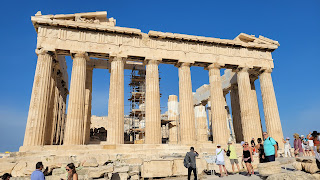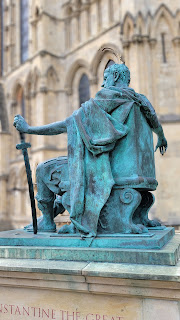Mentoring Produces Results at Home and School
By Jeffrey M. Bowen
What
makes mentoring a different kind of relationship in your life?
No
single synonym completely captures its essence, but words like counseling and
problem solving, developmental partnering, and trustful caring come into play.
At least two people should be engaged, a mentor and a mentee, and the
connection works when it involves open two-way communication. The popular
assurance, “I’ve got your back,” applies.
Contrasts
describe what mentoring is not. A mentor does not insistently advise,
critically evaluate performance, or warn mentees, “Follow my way or the
highway.”
When
opportunities and commitments are encouraged by listening instead of judging,
the experience becomes universally positive and memorable. Effective mentoring
is confidential and uniquely personal, that is, person to person. While it may
create rewarding teamwork, coaching a team toward victory does not really fit
mentoring. Yet when individualized, it can indeed.
Chances
are that parents and teachers come to mind first. The presence of an adult in a
young person’s life can be a powerful influence especially when it involves
listening and sharing knowledge. Adults fulfill a mentoring role when they
facilitate learning, model positive behaviors, and stand in their children’s
emotional corner.
My parents acted as mentors especially when
they listened without criticizing, asked leading questions, and when they
showed me how to exercise skills and talents that otherwise I might never have
discovered. I gained confidence because they believed in me and cheered me on.
When my wife and I became parents, we tried to
guide our children in this same way. For instance, my wife loves to cook.
Sharing her talents with our grown daughter has nurtured common ground for
wonderful cuisine as well as mutually gratifying communication. My spouse
serves as a sounding board for our daughter’s challenges as a parent, and so
the mentoring cycle continues.
A
New York City court clerk named Ernest Coulter is recognized as the founder of
American mentoring programs. In 1904 he observed that too many young boys
coming to the courtroom were risking a stint in “reformatory” because they
lacked contact with a caring adult. Coulter’s effort to recruit members of
local churches to guide fatherless boys one-on-one led to the 1909 founding of
the Big Brothers movement.
A
parallel effort in Ohio produced a counterpart through Catholic Big
Sisters. A century later, with
endorsements and advocacy from multiple presidents and Congress through the
years, Big Brothers Big Sisters (BBBS) is now a thriving international
association involving 360 affiliates.
Proof
of dramatic success comes from a well-designed 1995 national study of BBBS. A
thousand demographically diverse adolescents from BBBS agencies were screened
and selected to participate in the research. Half were carefully matched with a
volunteer mentor who met with them three times a month for an average of one
year. The other half were placed on a waiting list, and they served as a
control group; that is, they were not matched with a mentor and did not receive
BBBS services at least during the time of the study.
The
youngsters who met regularly with a mentor proved 46 percent less likely than
the control group to abuse illegal drugs, 27 percent less likely to begin using
alcohol, 52 percent less likely to skip school, and 33 percent less likely to
hit someone. Related evidence confirmed increased academic confidence and
stronger parental relationships. The longer children participated, the less
they focused on specific problems or activities, and the more they seemed to
appreciate just having someone to confide in and look up to.
Nowhere
are mentorships more prevalent than in our schools. The influence of teachers on
students is well known, but teacher-to-teacher mentoring may be less familiar
to many.
As a district office administrator I was
privileged to work for more than a decade with dozens of mentor teachers who
were matched with newer teacher mentees by subject or grade level. Results were gratifying for the participants
because experiences and advice could be shared confidentially. Rules of the
bureaucratic road could be communicated comfortably. Instructional resources
could be identified. Mentees were asked to continue an additional year, with
time set aside for book studies and group discussion.
Because
schools are learning organizations, the positive effects of mentoring reinforce
consistency and a positive climate among all staff and students. I certainly
witnessed this as a charter school evaluator and mentor. For seven years I
relied on a performance review system whose research verifies an eight percent
gain in student achievement due to factors of social climate. It should be no
surprise that students who feel safe and valued may thrive academically.
A
crucial aspect of creating a productive school climate proved to be the extent
to which the school principal mentored a cadre of seasoned, trustworthy
mentors, with whom she consulted frequently. The principal modeled mentoring,
encouraging an open-door policy, as did I in my role as both her evaluator and
mentor.
In
a small elementary school with just two paired teachers by grade level,
mentoring “on the fly” occurred constantly. Partnered teachers shared promising
instructional practices and consulted on individual student behavioral issues.
Within these grade groupings, teachers not only supported and counseled one
another, but nurtured teacher assistants and newer employees among all grades,
doing so informally and with encouragement from an open-minded administrative
staff.
Much
to its credit, New York state has promoted consistent standards for mentoring
programs and internships. The state teachers’ union (NYSUT) has been deeply
involved in this effort since 1986. The State Education Department has been
awarding two-million-dollar grants for mentoring programs since 2018.
Finally, using a research-based model, the
state Council on Children and Families supports and sponsors school-based
one-on-one mentoring programs for volunteers who must be at least 18 years of
age. They are screened, trained, and matched to children in their communities.
Descriptive brochures are available for this ground-breaking strategy.
We
have enhanced and institutionalized mentoring programs because they have
yielded positive results at so many levels in schools, businesses, and society.
We must recognize that mentoring may well begin at home with parents and other
willing adult models throughout our communities. Whatever the approach, it will
usually succeed when there is a conscientious reciprocal commitment between
mentor and mentee. The impact is lasting and uniquely personal.





